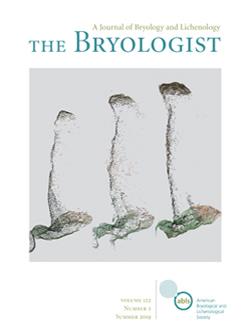Calymperaceae is a large moss family well represented in lowland tropical rain forests worldwide. To date, both infra- and extra-familial relationships in Calymperaceae remain largely unresolved. Here, we present a multi-locus phylogenetic hypothesis based on one ribosomal, one mitochondrial and four plastid markers from 61 taxa with the aim to: 1) test the monophyly of Calymperes; 2) evaluate the subgeneric classification for Syrrhopodon; 3) estimate divergence times in light of the “shadow of the angiosperms” hypothesis; and 4) examine the global-scale phylogeographic patterns in light of predictions that lowland tropical bryophytes have higher dispersal capacities than extra-tropical taxa. Our analysis, which now includes 15% of the family's Neotropical representatives, corroborates the monophyly of Calymperes, Mitthyridium and the Leucobryoid taxa, and demonstrates that leaf morphology (including leucobryoid characters) are evolutionarily labile traits. The large genus Syrrhopodon continues as polyphyletic, and only subgenera Leucophanella, Heliconema and Pseudocalymperes were recovered as monophyletic. The largest limbate subgenus Hyalolimbatae is polyphyletic with sampled taxa distributed among three separately supported clades. Divergence time analyses suggest a relatively recent (Mid to Late Miocene) radiation accompanying the spread of tropical forests coupled by multiple, independent pantropical exchanges. Although strong phylogeographic signal was recovered, multiple sister groups showed close geographical ties among Amazonian and Asian Pacific taxa suggesting that inter-continental migrations followed by cladogenic events occurred repeatedly starting from 20 mya. Evidence for inter-continental exchanges (i.e., long distance dispersal) in the relatively recent geological past is particularly unexpected for Calymperaceae as the family is dioecious (a rare trait for pantropical bryophytes), and characterized by low sporophyte production.
How to translate text using browser tools
20 May 2019
Advances in Calymperaeae (Dicranidae, Bryophyta): Phylogeny, divergence times and pantropical promiscuity
Marta Regina Pereira,
Paulo E. A. S. Câmara,
Bruno S. Amorim,
Stuart F. McDaniel,
Adam C. Payton,
Sarah B. Carey,
Adriel M. Sierra,
Charles E. Zartman
ACCESS THE FULL ARTICLE

The Bryologist
Vol. 122 • No. 2
May 2019
Vol. 122 • No. 2
May 2019
Acrocarp
angiosperm shadow hypothesis
dioicous
epiphyte
long distance dispersal
moss
subgenus




